Postpublished at 10:56 GMT 20 March 2015

That speck at the top of the picture is actually the eclipse, as seen from a plane over the Faroe Islands, one of the places to experience totality.
All parts of the UK have been witnessing a partial solar eclipse, which started at about 08:18 GMT in southern England and peaked at around 09:36
The Faroe Islands and Svalbard in the Arctic Circle were the only places to experience a total eclipse
The amount of the sun's disc which is obscured varied from 96% in northern Scotland to 83% in southern England
Chris Lansdown, Lauren Turner, Kerry Alexandra, Jennifer Green and Michael Orwell

That speck at the top of the picture is actually the eclipse, as seen from a plane over the Faroe Islands, one of the places to experience totality.
David Cook sent us his image of a plane flying across the eclipse in Blackburn, Lancashire.
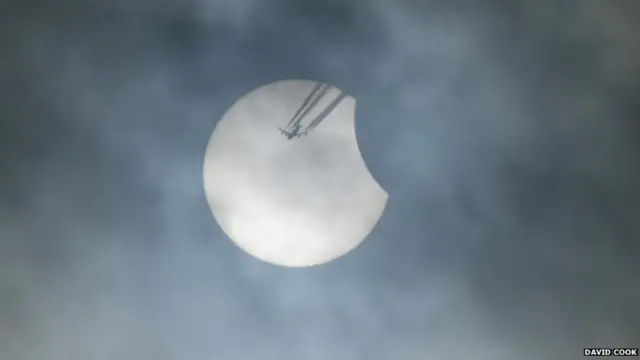 Image source, David Cook
Image source, David Cook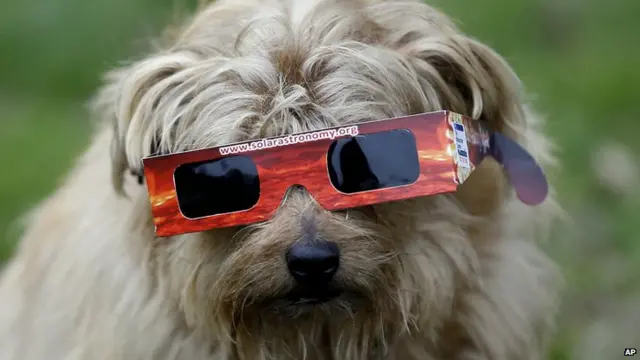 Image source, AP
Image source, APEven animals got in on the act. The owner of this dog in Regent's Park, London, decided to play it safe during the eclipse by giving it protective glasses.
In addition to the moon being a Supermoon and eclipsing the Sun, today also happens to be the March equinox (or spring equinox as it is known in the northern hemisphere).
Today, the Earth's axis will be perpendicular to the Sun's rays , which only happens twice a year, at the two equinoxes.
On the equinox, night and day are nearly exactly the same length all over the world.
The next total solar eclipse at the March equinox will happen in 2034.
 Image source, Getty Images
Image source, Getty ImagesPupils from Saint Ursula's Covent Secondary School in Greenwich, south London, wore protective glasses to try to see the eclipse from the Royal Observatory.
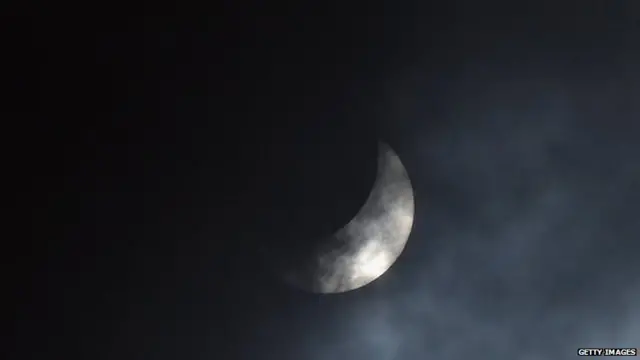 Image source, Getty Images
Image source, Getty ImagesHere's the eclipse over the Madeira Islands in Portugal, peeking out through the clouds.
This BBC picture gallery has images from the morning as a solar eclipse was seen across Europe, as well as parts of Asia and Africa.
After totality, full daylight returns to the Faroe Islands after about one hour.
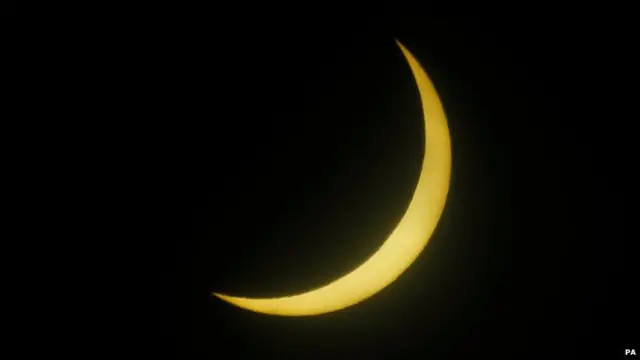 Image source, PA
Image source, PAIt may look like the moon, but this is the Sun during the partial eclipse. This picture was taken from Calton Hill, Edinburgh.
Do solar eclipses affect our weather? Prof Richard Harrison, MBE, Head of Space Science at Rutherford Appleton Laboratory writes:
"An eclipse is a transient event in which the Moon's shadow crosses the Earth's surface so, in the region of totality, the Sun's heat is blocked for a short time. As you would expect, that does cause short-term impacts on weather. For example, it causes a drop in temperature that observers within the shadow can feel, and it has an influence on local wind patterns as temperature gradients are set up."
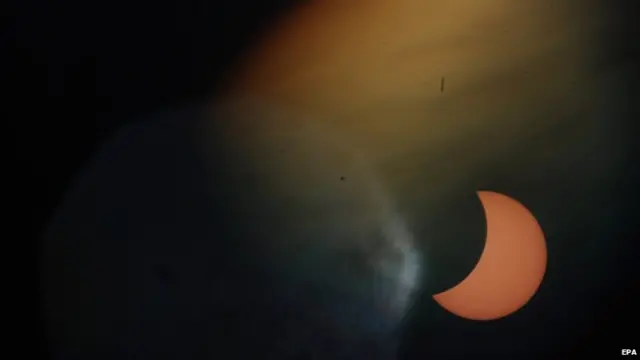 Image source, EPA
Image source, EPAEurope wasn't the only place to experience the eclipse. This is what it looked like from Rabat, Morocco.
Clouds may have obscured the view of the eclipse in many places in the UK, but they later parted at Stonehenge and on the Isle of Lewis, allowing those gathering at the standing stones in each location to witness the phenomenon.
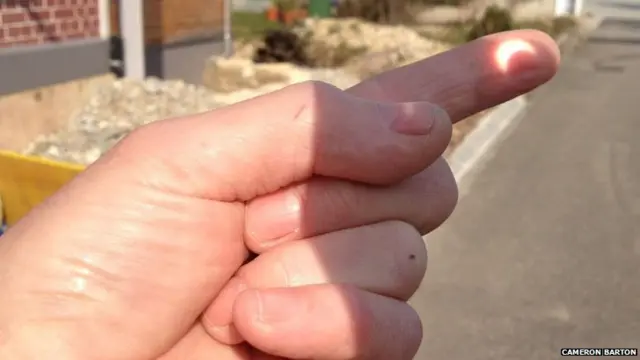 Image source, Cameron Barton
Image source, Cameron BartonThis photo comes from Cameron Barton, Basel, Switzerland.
Lunar eclipses are completely different to solar eclipses. Rather than the Moon coming between the Sun and the Earth, the Earth drifts between the Moon and the Sun. This stops the Sun's rays reaching the Moon. The Moon is still visible during a lunar eclipse but appears red or orange.
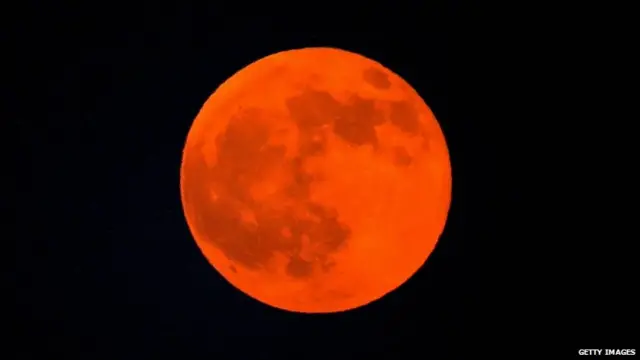 Image source, Getty Images
Image source, Getty Images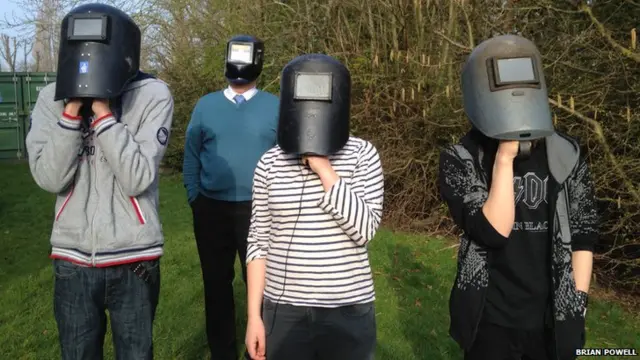 Image source, Brian Powell
Image source, Brian PowellThis picture of students at Nailsea School, Bristol watching the eclipse was sent by Brian Powell.
@BBCweather tweeted, external: "Over 200 schools have taken readings for the #eclipse2015 weather experiment. Hope to have some results later."
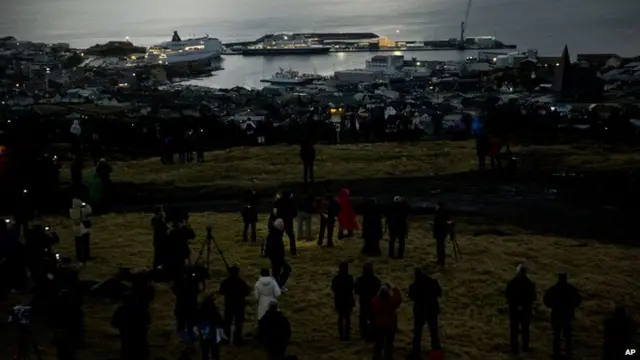 Image source, AP
Image source, APHere's an atmospheric image of people in Torshavn, the capital of the Faroe Islands, gathering on a hill to watch the total eclipse a little earlier this morning.
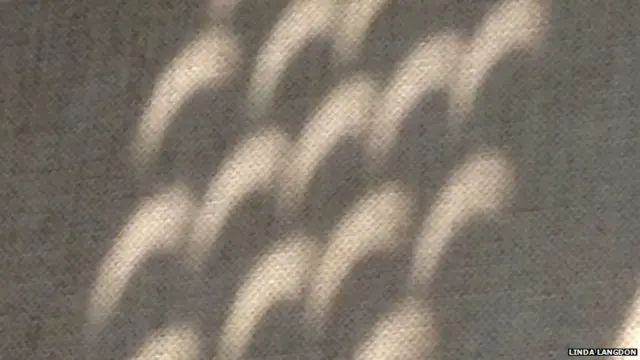 Image source, Linda Langdon
Image source, Linda LangdonLinda Langdon from Cornwall sent us this photo of the view from south west England
The type of solar eclipse we see depends on how far away the Moon is as it travels across the Sun and whether it lines up directly between the Sun and the Earth.
If the Moon lines up with the Sun and the Earth and is orbiting close to our planet, a total eclipse will occur. If it's orbiting far from the Earth, we'll see an annular eclipse instead.
When the Moon passes between the Earth and the Sun, but doesn't block out all the light, it causes a partial eclipse - like the one some of us saw in the UK today.
Interactive: See how each type of solar eclipse is formed
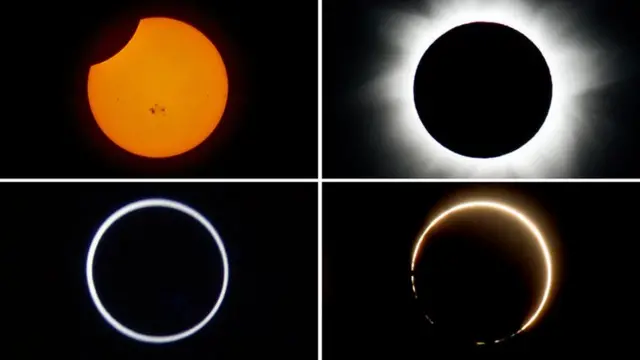 Image source, BBC Stargazing Live Flickr
Image source, BBC Stargazing Live Flickr
Here's the Sun emerging after the total eclipse in Svalbard.